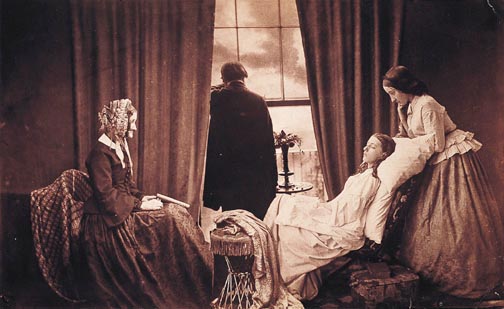It was I suppose apt that I felt like a fish out of water as I wandered around Photo-London on the opening day yesterday. Its new venue, the old Billingsgate fish market, seems an excellent choice, airy and open, completely unlike the underground tomb in which Paris Photo is held.
What made me feel out of place and uneasy was in the main the work on the walls. Photo-London is supposedly dedicated to contemporary photography, meaning from the 1970s on, although a little earlier work did creep in, so I’d expected to see contemporary work. What I hadn’t been prepared for was the almost complete dominance of the show by large empty photographs. Of course shows like Photo-London are dealer shows, and the dealers follow the money, and big money is largely corporate money with vast office walls to fill.
Although the work in corporations may actually get done in open plan offices and cubicles often with virtually no walls at all, reception areas are designed to impress by scale, and 20×16 prints look rather small on a 30 foot high wall. As Photo-London showed, there is plenty of photographic choice for such spaces, from garish to minimal, to suit your company profile.
Of course not all big photographs are bad photographs, but in general I don’t think a large scale fits the medium well. Its most powerful statements have an intimacy that works better on a moderate scale, perhaps best of all in the pages of the photographic book.
Of course there was work that stood out for me, though relatively little. I’ll go back to the show (it runs until Sunday) and look at some again. Much of what attracted me was however familiar, for example – a fine set of work by Don McCullin as well as pictures by Chris Killip, John Benton-Harris and Ian Berry, all showing “How We Are”, (although three of these four are unaccountably missing on the walls of the Tate show) – but there was also work new to me (at least in actual print form) which I found exciting and hope to write more on later – so long as I can find images on the web. Along with much that confirmed my exisiting predjudices.
Portraiture in particular seems very much in a rut. Use flat lighting, stand your subject or subjects central, looking deadpan at the camera, photograph in medium or large-format colour and you seem to be guaranteed gallery space. Around ten years back this seemed fresh and new (at least to those who had never seen the work of August Sander, who did it so much better, if in black and white.)
John Benton-Harris (2nd from left) with friends at the opening.
As openings go, its a rather dreary and disappointing event, with small cliques in the different gallery spaces and its hard to meet new people or have a real party. At least at Billingsgate you could go and sit outside by the Thames, although it was a chill evening on the north bank, even though the sun shone on the buildings on the other bank.
Peter Marshall

